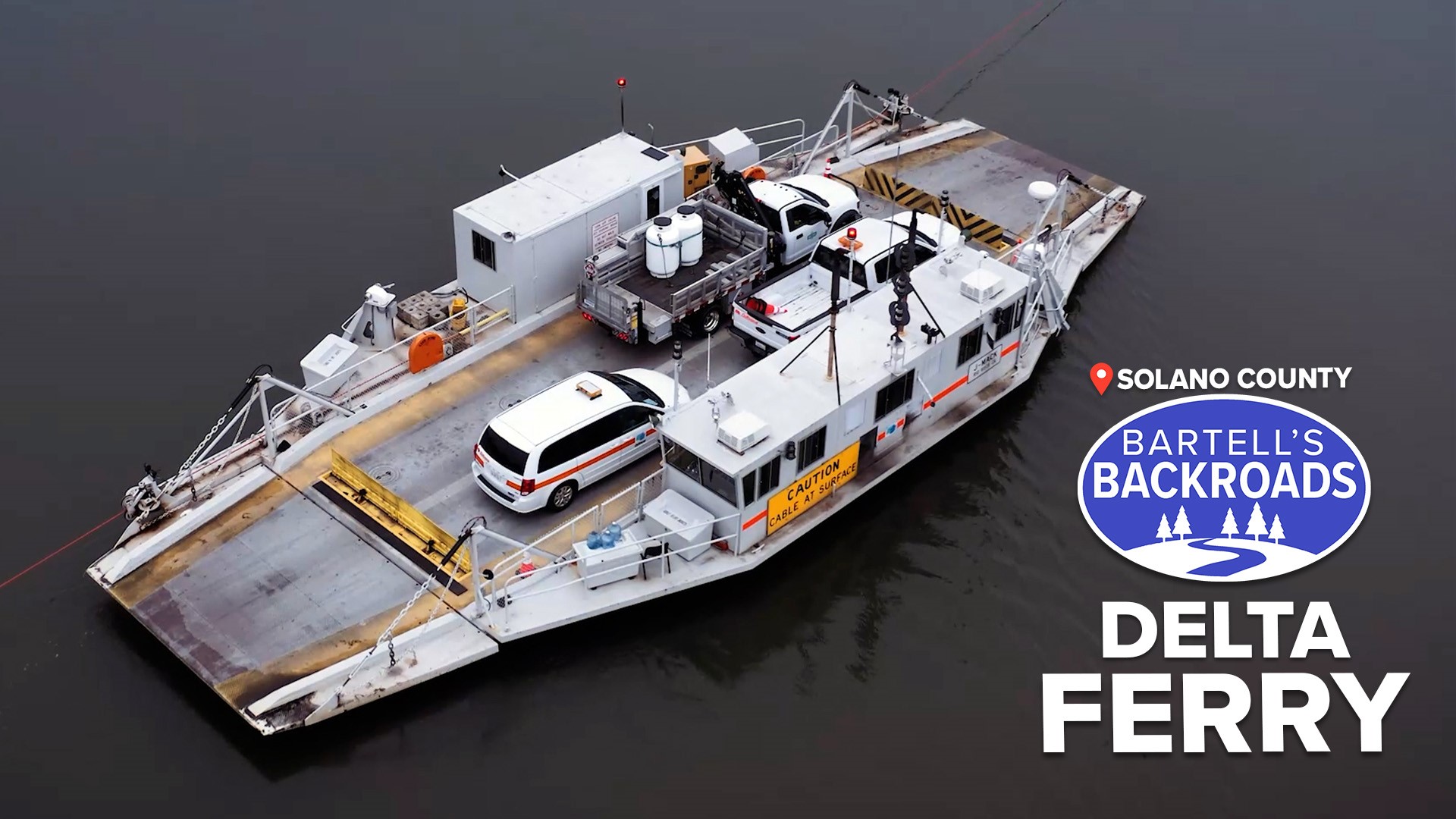SOLANO COUNTY, Calif. — The Sacramento-San Joaquin Delta spans five different counties and separates Sacramento from San Francisco. During California’s Gold Rush era, boats were the only way to travel through the Delta.
Today, cars can drive all over the wetlands thanks to roads, bridges and two unique ferry boats called the J-Mack and The Real McCoy II — also known as the Delta Ferry system. The boats are the fastest way off and on Ryer Island which is used by many of the residents in this area.
“This place [is] about 30 miles from Sacramento and most people from Sacramento have no clue this place is even out here,” said Ryer Island resident William Just.
The Delta Ferry system is not just for the residents of Ryer Island. The Real McCoy II and the J-Mack ferries are part of Highway 84 and Highway 220.
“If I had to go to Rio Vista 8 miles from here and both boats were closed, I would have to drive 50 miles around,” said Just.
The J-Mack and The Real McCoy II are the only state-run ferries. Many describe it as a floating piece of the highway. Phil Pezzaglia works for Caltrans and he’s also a delta history buff.
“There has been a ferry here since the 1800s,” said Pezzaglia.
The J-Mack is probably the most unique ferry in California because it is a cable-drawn ferry.
“Right now, we are taking off from Ryer Island heading to Grand Island, and behind me, you can see the red cable pulling us across,” said Pezzaglia.
The ferry ride takes just minutes to cross Steamboat Slough, which is an active shipping channel. When the J-Mack is not moving, the cable sits 18 feet underwater so boats can’t hit it.
The best part about this ferry ride?
“It doesn’t cost you a darn thing and that’s what people always ask, so they are shocked when they find out it is a completely free ride," said Pezzaglia.
TAKE A TRIP ON BARTELL'S BACKROADS:
► See an interactive map of everywhere John has visited on the backroads
► Watch all of the Backroads videos
► Follow John on Facebook
Ferries of all kinds have been used in the delta as far back as the Gold Rush era in the 1850s. That’s because the islands in this area have very fertile soil, and there’s plenty of water for growing crops.
“People that came to California wanting to make a fortune didn’t make it, so they ended up becoming merchants or farmers,” said Pezzaglia.
Free from the tether of a cable is the Real McCoy II. The 88-foot-long ferry is an extension of Highway 84, taking passengers to and from Ryer Island and Rio Vista.
“You pretty much take all your conventional knowledge of a boat and throw it out the window when operating this boat. It’s totally different than any conventional boat,” said Bruce Kitchens, captain of the Real McCoy II.
Captain Bruce, as he is known, has been ferrying passengers across Cash Slough since 2004 and the unconventionality of the Real McCoy II that he is talking about is the complex propeller system called the “Thrust Master.”
“The diesel engine runs the hydraulics which run the aprons, the propellers and steers,” said Captain Bruce.
The Thrust Master allows the boat to rotate 360 degrees very quickly because the propeller is not at the back of the boat. It's in the middle, located in what’s called the "Moon Room," which is basically an opening in the center of the boat that allows access to the Thrust Master.
“This allows the propeller to come out of the water,” said Captain Bruce.
Just like the J-Mack cable ferry, the Real McCoy II is also free. It does, however, require lots of maintenance. The state actually put a schedule on the Real McCoy II to limit operation and prevent breakdowns.
“Just like any boat, breakdowns happen when they get a lot of use,” said Captain Bruce.
It may seem more economical for the state to replace the ferry system with a bridge but Phil Pezzaglia explains that traffic numbers have yet to warrant building a bridge.
“Well, it wouldn’t be financially relevant when you have a ferry out here. There really isn’t a lot of traffic out here but you still need to get out here, and it is easier to have a captain providing this service whenever you come up,” said Pezzaglia.
More Backroads fun on the water | The Albany Bulb was a place to dump trash into San Francisco Bay. Now, it's an art park and a place to catch a beautiful sunset glimpse of the city skyline.



















